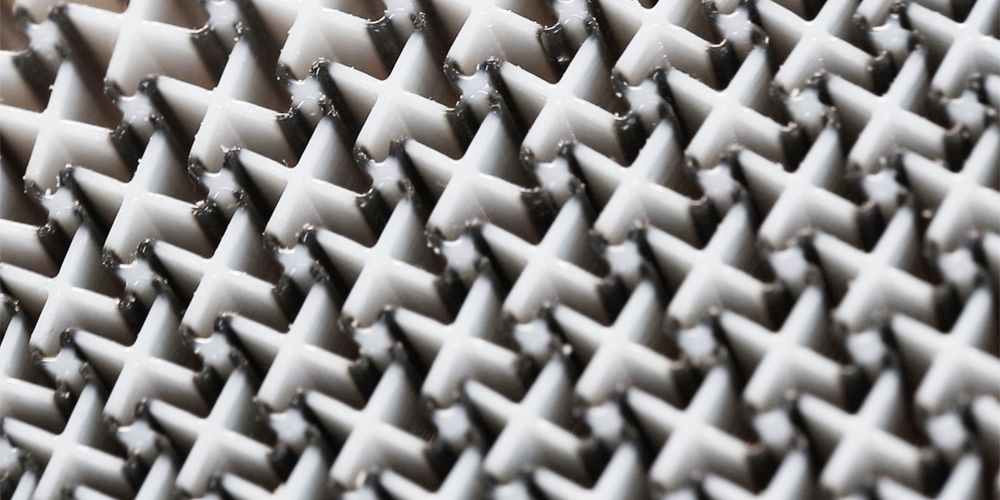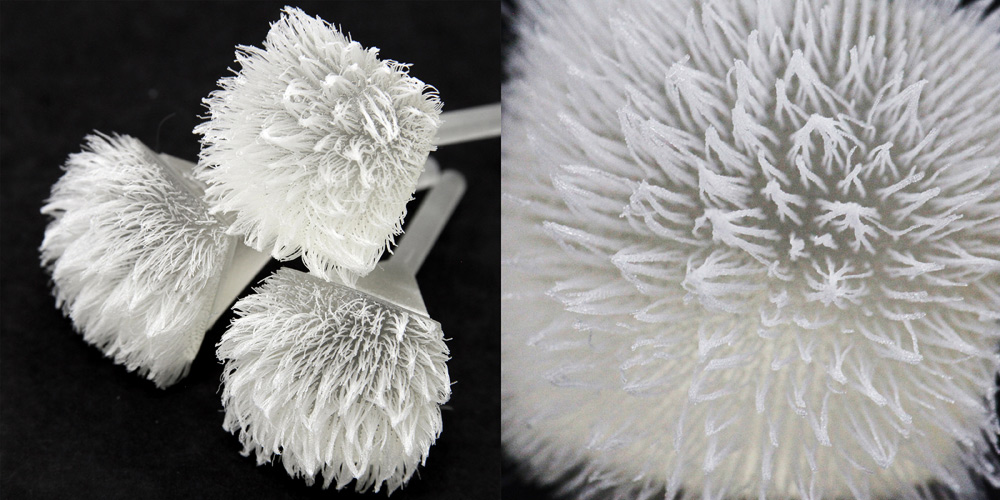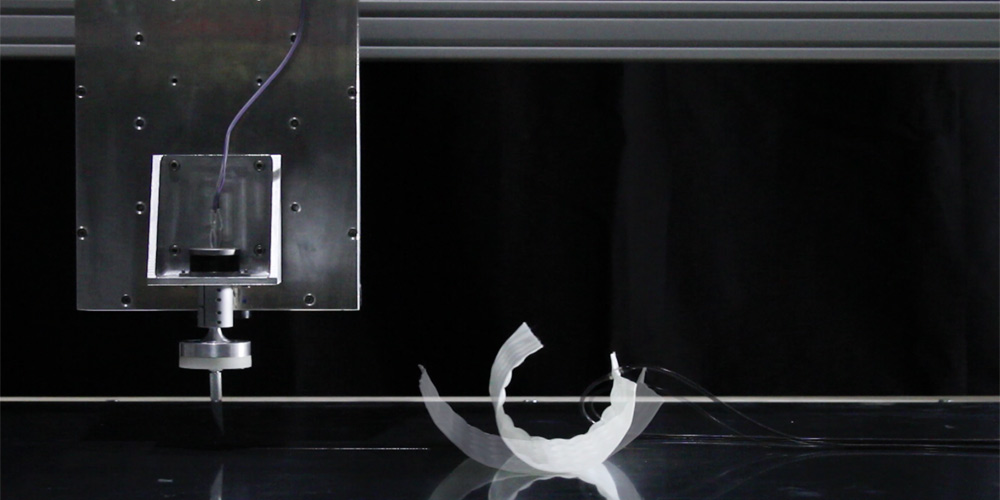
Tangible Media Group (US)
How do we get the digital (back) into the physical world? An answer to this question could be so-called radical atoms. In a sort of digital core meltdown, they bond information and material—the information liberated from the constraints of the pixel realm, the atoms wrenched out of their static state and set in motion. The results are smart materials that can be computer-modeled and remodeled into ever-new forms.
Radical atoms in the hands of visionary scientists and engineers are being formed into high-tech materials and applications with astounding properties and capabilities. Neuroscience and biotechnology, robotics, hardware and software play roles in this; so do traditional practices in the crafts and trades.
A hotspot of these trailblazing developments is the Media Lab at the Massachusetts Institute of Technology (MIT), where Hiroshi Ishii and his Tangible Media Group have been working on new forms of human-machine interaction for over 20 years. The breakthrough prototypes that have been emerging there can now be seen in the Radical Atoms exhibition at the Ars Electronica Center.
Cillia

Jifei Ou, Nikolaos Vlavianos, Hiroshi Ishii (JP/US)
Cillia is a means of 3-D printing hair structures. This technical solution constitutes a design innovation that will simplify the production of synthetic fur. Nowadays it seems as if 3-D printers can churn out just about anything—from a sports car to food to human skin. Nevertheless, there are some things that, up to now, have required a huge amount of computational time and power to generate with a 3-D printer. They include hair, fur and other structures with dense arrays of extremely fine elements. Using conventional computer-aided design software, a user would have to render each individual hair, elaborating its contours as a mesh of tiny triangles and then converting the cross-sections of that mesh into layer-by-layer instructions for the 3-D printer—a process that would take hours. Cillia eliminates all that with a new voxel-based printing software platform that lets users define the angle, thickness, density and height of thousands of hairs in just a few minutes, whereby Cillia works at a 0.05-millimeter degree of precision. [NOTE: In computer graphics, a voxel is an element in a three-dimensional mesh, and thus corresponds to a pixel in a two-dimensional image.]
Credits
Exhibition: Jifei Ou, Nikolaos Vlavianos, Hiroshi Ishii
Research: Jifei Ou, Mike Wang, Gershon Dublon, Chin-Yi Cheng, Karl Willis, Hiroshi Ishii
kinetiX

Jifei Ou, Jannik Peters, Karl Willis, Hiroshi Ishii (JP/US)
kinetiX is a new, transformable material featuring a design that resembles a cellular structure. It consists of rigid plates or rods and elastic hinges. These modular elements can be combined in a wide variety of ways and assembled into multifarious forms.
What the resulting kinetiX structures look like and what characteristics they possess are determined with the help of computer-supported simulations. This makes it possible to derive mathematical models that contain the physical properties and design attributes of the material. Various configurations of the kinetiX structure are then tested by architectural software and stored to a library of various design options. Once such a formal archive has been set up, kinetiX can be quickly and easily configured into a vast array of architectural structures.
Credits
Exhibition: Jifei Ou, Nikolaos Vlavianos, Hiroshi Ishii
Research: Jifei Ou, Jannik Peters, Karl Willis, Hiroshi Ishii
aeroMorph

Jifei Ou, Nikolaos Vlavianos, Hiroshi Ishii (JP/US)
aeroMorph investigates how materials stacked in multiple layers can be used to make self-folding origami structures. This project works with a programmable bending mechanism that triggers shape-changing behavior in fabric, paper and plastic.
With a specially developed software tool, the basic structure of an origami form can be computer-generated. The tool then simulates the material’s transformation into the finished origami shape and exports this information as a digital fabrication file. A custom-made head of a heat-sealing machine is mounted on a conventional 3-axis CNC machine that precisely cuts the geometric shapes of the origami structure out of the material. This technology has been conceived for use in manufacturing toys and interactive wearables, and in the packaging industry.
Credits
Exhibition: Jifei Ou, Nikolaos Vlavianos, Hiroshi Ishii
Research: Jifei Ou, Nikolaos Vlavianos, Melina Skouras, Felix Heibeck, Chin-Yi Cheng, Jannik Peters, Hiroshi Ishii

